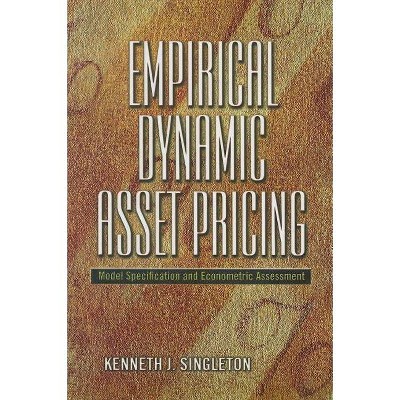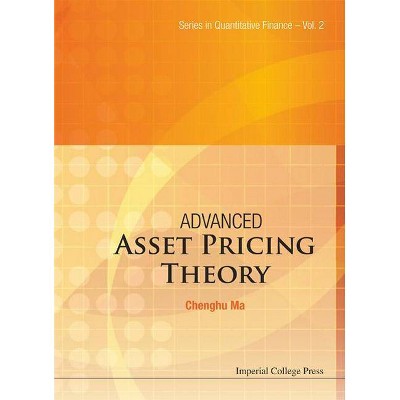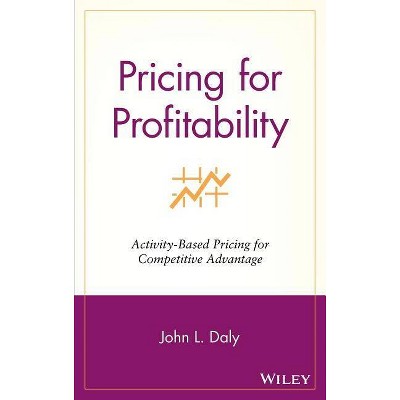Asset Pricing - by John H Cochrane (Hardcover)

Similar Products
Products of same category from the store
AllProduct info
<p/><br></br><p><b> Book Synopsis </b></p></br></br><p>Winner of the prestigious Paul A. Samuelson Award for scholarly writing on lifelong financial security, John Cochrane's <i>Asset Pricing</i> now appears in a revised edition that unifies and brings the science of asset pricing up to date for advanced students and professionals. Cochrane traces the pricing of all assets back to a single idea--price equals expected discounted payoff--that captures the macro-economic risks underlying each security's value. By using a single, stochastic discount factor rather than a separate set of tricks for each asset class, Cochrane builds a unified account of modern asset pricing. He presents applications to stocks, bonds, and options. Each model--consumption based, CAPM, multifactor, term structure, and option pricing--is derived as a different specification of the discounted factor. <p/> The discount factor framework also leads to a state-space geometry for mean-variance frontiers and asset pricing models. It puts payoffs in different states of nature on the axes rather than mean and variance of return, leading to a new and conveniently linear geometrical representation of asset pricing ideas. <p/> Cochrane approaches empirical work with the Generalized Method of Moments, which studies sample average prices and discounted payoffs to determine whether price does equal expected discounted payoff. He translates between the discount factor, GMM, and state-space language and the beta, mean-variance, and regression language common in empirical work and earlier theory. <p/> The book also includes a review of recent empirical work on return predictability, value and other puzzles in the cross section, and equity premium puzzles and their resolution. Written to be a summary for academics and professionals as well as a textbook, this book condenses and advances recent scholarship in financial economics.</p><p/><br></br><p><b> From the Back Cover </b></p></br></br><p>"An excellent survey of asset pricing theory and applications from the modern viewpoint of stochastic discount factors and their associated geometry. This book was already a classic among finance scholars and on Ph.D. syllabi when it circulated in the form of class notes. It will also prove highly useful to practitioners who seek an in-depth introduction to these tools."<b>--Yacine Aït-Sahalia, Princeton University</b></p><p>"This is a beautiful book that uses the elegant simplicity of the stochastic discount factor to present a general theory of the pricing of stocks, bonds, and derivatives and a practical approach to estimating particular models derived from the general theory. It will help experts in the field to consolidate their knowledge and beginners to appreciate the unity of asset pricing theory. Cochrane uses his mastery of the subject to present it in a clear and compelling manner that is easily accessible."<b>--Michael Brennan, Anderson School, University of California, Los Angeles</b></p><p>"This is an impressive treatise of very high quality. It is a serious scholarly monograph, of interest to those who are working to advance financial theory, and it can also serve as a textbook in an advanced finance course. It is thoughtful, inductive, and comprehensive."<b>--Robert J. Shiller, author of <i>Irrational Exuberance</i></b></p><p>"This is a sparkling, intuitive, makes-it-look-easier-than-it really-is, gem of a book . . . Cochrane's focus is the classical asset pricing models of frictionless markets and rational expectations. But the lessons learned are relevant in many empirical contexts. Cochrane's clever intuition and easy, informal writing style make the book a joy to read."<b>--Wayne Ferson, Boston College</b></p><p>"This book represents an exciting step forward in the exposition of financial economics. The last twenty years of finance research have advanced and enriched the field, and textbook treatments have lagged behind these developments. This text will replace the previous generation of books and should have a broad market. It is written in an informal, almost breezy style that will appeal to students and is divided into small, easily digested chapters. . . . The book moves easily between discrete-time and continuous-time models. This is an excellent thing as it encourages students to see beyond the formalism to the underlying economics. I strongly recommend it as an advanced finance text."<b>--John Y. Campbell, coauthor of <i>The Econometrics of Financial Markets</i></b></p><p/><br></br><p><b> Review Quotes </b></p></br></br><br>Co-Winner of the 2001 Paul A. Samuelson award<br><br>This is a brilliant and useful book, well-deserving of the TIAA-CREF Samuelson Award. . . . The clever intuition and informal writing style make it a joy to read. Like a star athlete does with the sport, Cochrane makes it look easier than it really is.-- "Journal of Economic Literature"<br><p/><br></br><p><b> About the Author </b></p></br></br><b>John H. Cochrane</b> is Theodore O. Yntema Professor of Finance at the University of Chicago Graduate School of Business. He is Director of the National Bureau of Economic Research Asset Pricing Program.
Price History
Cheapest price in the interval: 115 on October 27, 2021
Most expensive price in the interval: 115 on November 8, 2021
Price Archive shows prices from various stores, lets you see history and find the cheapest. There is no actual sale on the website. For all support, inquiry and suggestion messagescommunication@pricearchive.us




















